|
1.
CENTRAL AND WEST AFRICA
Buyers for Chinese market are stepping up interest
Some exporters are seeing a rise in demand for peeled
veneer, plywood and sawnwood particularly in Asian
markets. Buyers for the Chinese market are stepping up
interest in bilinga, movingui andsSapelli in addition to
okoume.
In Gabon it has been reported that the supply of okoume
logs to peeler and sawmills has been disrupted by adverse
weather conditions. Olam is a major supplier of logs to
processing mills, especially those in the Special Economic
Zone. News (unconfirmed) is circulating that a large part
of the approx. 2 million hectares of concession held by
Olam has been reclaimed by the government.
Côte d'Ivoire/EU Partnership – VPA signed
On 19 February the European Commissioner for
International Partnerships, Jutta Urpilainen, Ivorian
Minister of Water and Forests, Laurent Tchagba and
Ambassador the Belgian Permanent Representative to the
European Union, Willem van de Voorde, signed a VPA.
This signing marked the end of a 10-year negotiation
process. Now the focus will shift to its implementation
which will involve setting up a verification system to
guarantee legality and traceability of timber exported as
well as timber traded locally.
See:
https://international-partnerships.ec.europa.eu/news-and-events/news/global-gateway-cote-divoire-and-eu-unite-safeguard-forests-and-combat-illegal-logging-2024-02-19_en#:~:text=C%C3%B4te%20d'Ivoire%20is%20the,a%20VPA%20with%20the%20EU.
UK and CITES collaboration
The UK Minister of State, Department for Environment,
Food and Rural Affairs has said the UK is currently
contributing funding towards a CITES study on the
conservation and trade in rosewood tree species. He
indicated the UK has in place a mechanisms through the
UK Timber Regulations (UKTR) which prohibit the
placing of illegally harvested timber and wood products on
the UK market. .
See:
https://www.theyworkforyou.com/wrans/?id=2024-02-05.HL2178.h
New Training Centre for Timber Sector
The ATIBT has reported a new vocational training centre
has been opened for the timber sector in Gabon. In
February the first group of trainee sawyers, peelers, joiners
and sharpeners began their training at the new Centre de
Formation et d'Enseignement Professionnels (CFEP) Bois-
BTP in Nkok, Gabon.
At a meeting with the private sector CFEP Bois-BTP
Director, Bon-Jean Félicien Badjyenda said the Chairman
of the Board of the new establishment will be from the
private sector.
See:
https://www.atibt.org/en/news/13448/a-new-vocational-training-centre-for-the-timber-sector-in-gabon
Guidelines on contracts and practices
The ATIBT reports it has made available updated
guidelines and recommendations on contracts and
practices for the international trade in tropical timber. 12
new reference pamphlets are available on the ATIBT
website covering guidelines and recommendations on the
uses of tropical woods in international trade.
See:
https://www.atibt.org/en/resource-categories/31/0-reference-works?resource_group_id=94#category-list
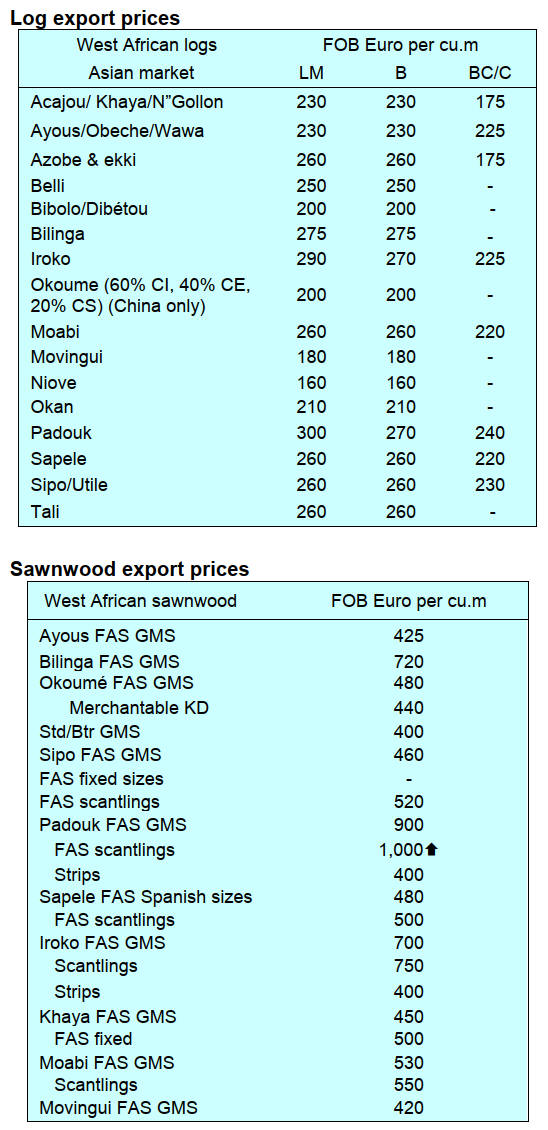
Through the eyes of industry
The latest GTI report lists the challenges identified by the private
sector in the Republic of Congo and Gabon.
See:
https://www.itto-ggsc.org/static/upload/file/20240223/1708653799120615.pdf
2.
GHANA
Research team recommends funding into
engineered
wood products
A research team from the Ghana Timber Industry
Development Division (TIDD) has signalled the need for
further research into engineered wood products and pellet
production. This came after a visit by a delegation from
the Forestry Commission research team and key industry
stakeholders to India, Vietnam and Thailand. Mr. Samuel
Mawuli Doe, the Research and Statistics Manager of the
TIDD who led a trade mission, said this had become
necessary due to the rate at which Ghana was losing
markets for its traditional wood products.
Speaking at the presentation of the team’s findings and an
‘Analysis of Ghana Timber and Wood Products Exports’
Mr. Doe said a proposal had been written for funding for
further research to be conducted and called on the industry
for support. The team also proposed the examination of
lesser used species for engineered wood products.
According to Mr. Doe, their visit to Thailand revealed that
companies in Thailand are very successful with processing
and marketing rubberwood and acacia whereas in Ghana
acacia is used only for firewood. He said the team also
learnt about the need to prioritise value addition especially
for teak optimising machinery and total productivity,
tissue culture and development of fast-growing varieties.
See:
https://www.ghanabusinessnews.com/2024/01/25/research-team-calls-for-special-attention-for-wood-products-pellets-production/
Government action could undermine private sector
access to credit
Dr. Richmond Atuahene, a banking consultant, says
government’s constant borrowing could put Ghana on a
trajectory to recession. Atuahene emphasised that the
practice could significantly impede private sector access to
credit. According to him, recent data from the Bank of
Ghana showed that credit to the private sector has declined
by 10% in real terms.
He added that if the private sector does not have funds
then it cannot compete which would lead to the crowding
out of businesses and enterprises. Access to bank credit
facilities is one of the myriad of problems faced by the
Association of Ghana Industries (AGI) whose members
are in the manufacturing and industrial sectors including
timber-processing companies.
See:
https://www.ghanabusinessnews.com/2024/02/15/ghana-on-recession-trajectory-due-to-t-bill-borrowing-banking-consultant/
Ministerial reshuffle
A statement from the government details changes in
ministerial portfolios. The Ghana President announced a
reshuffle of ministerial appointees. Ken Ofori-Atta has
exited his role as Ghana's Minister of Finance and
Economic Planning after seven years to be replaced by Dr.
Mohammed Amin Adam who served as Minister of State
in charge of Finance.
The reshuffle also affected the position of Deputy Minister
of Lands and Natural Resources and now Akwasi Konadu
is the new Deputy Minister for the Lands and Natural
Resources. According to the presidential press release the
reshuffle takes immediate effect.
See:https://gna.org.gh/2024/02/ministerial-reshuffle-full-list-of-president-akufo-addos-changes-to-the-executive/
Investment Promotion Center needs review of funding
structure
The Ghana Investment Promotion Center (GIPC) has
disclosed a deficit in its operations over the past two years
raising concerns about the organisation's sustainability.
The Chief Executive Officer, Yofi Grant, mentioned these
challenges during the vetting of the Center by the
parliamentary Public Accounts Committee. Grant
attributed the deficit to the GIPC's heavy reliance on
internally generated funding and emphasised the difficulty
in raising the necessary revenue under the current
economic challenges facing the nation. He called for a
review of the funding structure of GIPC.
See:
https://www.myjoyonline.com/gipc-complains-of-financial-difficulties-due-to-economic-headwinds-records-low-fdi-inflows-in-2-years/
 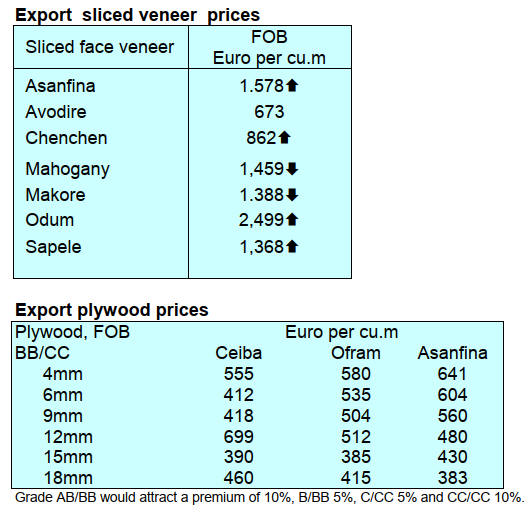
3. MALAYSIA
Economy grew 3.7% in 2023
Malaysia recorded a GDP growth of 3.7% in 2023 after an
expansion of 3% in the fourth quarter of the year
supported by continued recovery in economic activity and
labour market conditions.
Bank Negara Malaysia (BNM) said growth moderated
amid a challenging external environment last year
following the strong growth of 8.7% in 2022. Exports,
however, remained subdued due to prolonged weakness in
external demand and the stronger imports.
See:
https://theborneopost.pressreader.com/article/282303915056083
In related news, with the Malaysian currency weakening
close to a level last seen during the Asian financial crisis
25 years ago the government has ramped up its verbal
support for the ringgit. The Malaysian currency has been
under pressure from the strong US dollar and has suffered
because of tensions in the Middle East and the attempted
Russian invasion of Ukraine. In late February the ringgit
traded at 4.77 to the dollar, not far from the 4.885 level in
January 1998. The Malaysian currency has declined by
about 4% already this year.
Logging firm recognised
A Sabah logging company, Usahawan Borneo
Greenwood, has become the first to receive Yayasan
Sabah’s Appreciation Certificate as the Best Performing
Partner of Rakyat Berjaya for Integrated Mosaic Planting
in the Yayasan Sabah Concession Area (SFMLA 09/97).
Yayasan Sabah Group Group Forestry Division Manager,
Dr. Esther Li said this certificate is a way to recognise the
company for their good performance and to motivate them
to continue and at the same time, it is to encourage others
involved.
See:
http://theborneopost.pressreader.com/article/281487871275137
Preventing peat swamp fires
Peat swamp forests constitute a significant component of
the Malaysian forest and extend to around 1.54 million
hectares with most (70%) being in Sarawak, less than 20%
in Peninsular Malaysia and the balance in Sabah.
The Ministry Natural Resources and Environmental
Sustainability is currently implementing a ‘Sustainable
Management of Peatland Ecosystems in Malaysia’
(SMPEM) project as one of the initiatives to prevent
peatland fires.
See:
http://theborneopost.pressreader.com/article/281505051144321
Agarwood management
The Malaysian Timber Industry Board (MTIB) has been
appointed as a Management Authority responsible for
managing the registration of Scheduled Species for
Planters (Karas) in Peninsular Malaysia and the Federal
Territory under Act 686 (International Trade in
Endangered Species of 2008).
Agarwood is also known as Karas in Malaysia. Currently,
there are approximately 288 companies that have
registered as Karas planters covering 2,706 hectares.
The MTIB recently held a Karas Tree Identification and
Karas Plantations Auditing Workshop.
The objectives of the workshop were as follows:
Updating the list of existing auditors and
appointing new auditors
Providing updates to officials involved in the
auditing of Karas plantations of Act 686 in line
with the amendment of the 2022 Guidelines for
the Registration of Karas Planters
Ensuring that the auditing process of Karas
plantations is implemented more effectively
See:
https://www.mtib.gov.my/muaturun/eMaskayu_Publication/eMaskayu_2023/eMaskayu%20Vol%208_2023.pdf
Malaysian port in top 20 for container traffic
Port Klang in Selangor and Johor's Port of Tanjung
Pelepas (PTP) remain among the busiest global ports. Port
Klang recorded the highest throughput of containers last
year at 14 million twenty-foot equivalent units (TEU)
compared to 13 million TEU in 2022. PTP meanwhile
processed some 10 million TEU last year.
See:
https://www.thestar.com.my/news/nation/2024/02/23/port-klang-ptp-among-the-top-20-busiest-ports-in-the-world-says-loke
Through the eyes of industry
The latest GTI report lists the challenges identified by the private
sector in Malaysia.
See:
https://www.itto-ggsc.org/static/upload/file/20240223/1708653799120615.pdf
4.
INDONESIA
Furniture and craft industries need to adopt
advanced
technologies
Competition in international markets for furniture and
handicraft industries is getting tougher as Vietnam and
Malaysia strive to expand market share. The Chairman of
the Indonesian Furniture and Crafts Industry Association
(HIMKI), Abdul Sobur, stated that given the state of the
global economy it is very important to improve the
competitiveness of the national handicraft and furniture
industries.
According to him, one of the things that must be done to
improve competitiveness of the national furniture and
handicraft industry is adoption of advanced technologies.
The HIMKI has asked the Ministry of Industry to provide
subsidies for the rejuvenation of technologies in the
furniture and handicraft industry in the country.
The HIMKI is optimistic that the wood processing
industry can grow by 5% -6% this year even though
several main export markets such as the UK and Japan are
facing economic downturns. Abdul Sobur, said that his
Association has developed strategies to realise market
growth and one aspect is exploring exports to non-
traditional markets.
Japan and the UK have been one of the main markets for
furniture and craft although the market share for furniture
exports to the United States is larger. Statistics Indonesia
(BPS) noted that the value of furniture exports (HS 94) to
Japan decreased from US$174.71 million in 2022 to
US$141.15 in 2023. Meanwhile, furniture exports to
England also decreased from US$58.34 million in 2022 to
US$45.76 million last year.
See:
https://ekonomi.bisnis.com/read/20240221/257/1742913/duh-resesi-jepang-dan-inggris-ancam-ekspor-mebel-ri.
Support programme for machinery in wood processing
industry
The Ministry of Industry is working to enhance
productivity and competitiveness in the furniture industry.
The sector's export performance in 2023 was recorded at
US$1.8 billion. Moreover, the Industrial Performance
Index (IKI) for the furniture industry stood at 52.4 in
January 2024, which represented an expansion that
suggests that furniture companies are confident about
business conditions.
One of the efforts made by the Ministry of Industry is to
continue the restructuring programme for machines and/or
equipment in the wood and furniture processing industries.
The Director General of Agro-Industry, Putu Juli Ardika,
said the Ministry is implementing a restructuring
programme for machinery and/or equipment in the wood
processing industry, in the form of providing partial
reimbursement for purchases based on certain criteria.
Since 2022 twentyfour companies have participated in the
restructuring programme for machinery and equipment
used in the wood and furniture processing industry. Nine
companies joined the programme in 2022 while 15
companies joined in 2023.
In 2024, the budget allocated for the restructuring
programme for industrial machinery and equipment
reached IDR7.5 billion and targets 10 companies.
According to one company's report for the 2022 fiscal
year, this programme had increased the company's
efficiency by 10-30%, improved product quality by 10-
30% and increased productivity by 20-30%.
See:
https://www.msn.com/id-id/berita/other/kemenperin-gencarkan-program-restrukturisasi-mesin-di-industri-furnitur/ar-BB1iydpW
and
https://www.msn.com/id-id/berita/other/restrukturisasi-mesin-naikkan-produktivitas-sektor-furnitur-30-persen/ar-BB1iwu9R
Sustainability with environmental, social and
governance pillars
The Ministry of Environment and Forestry (KLHK)
continues to develop the forestry sector to uphold the
principles of sustainability with the Environmental, Social
and Governance (ESG) pillars. Acting Director General of
Sustainable Forest Management, Agus Justianto, stated
that this was to answer the challenges of the complexity of
environmental issues, social problems and economic
utilisation in development.
He continued saying “challenges that were initially limited
to problems of environmental damage, then spread to
social problems in accessing natural resources which are
also required to provide economic benefits for
development”.
According to Agus, the government has adopted various
approaches, from interventions through regulation, control
and supervision, law enforcement and capacity building to
developing an inventory and monitoring system.
The approaches that have been developed are implemented
based on various policy instruments, both in the form of
government regulatory instruments, as well as instruments
that apply on a global scale such as the Sustainable
Development Goals (SDGs), UN-CBD, Convention on
Biodiversity, Nagoya Protocol, and Paris Agreement.
See:
https://nasional.sindonews.com/read/1324003/15/komitmen-pembangunan-lingkungan-hidup-klhk-pegang-teguh-prinsip-esg-1708250552
Ministry reports - deforestation down, sustainable
forest utilisation up
The government continues to reduce deforestation and
utilise forests in a sustainable manner, said Agus Justiant,
adding "achieving a low deforestation rate is a key
performance indicator for the forestry sector".
Data from the Ministry shows that Indonesia's net
deforestation fell to 104,000 hectares in 2021–2022, down
from 113,500 hectares in 2020–2021.
Justianto highlighted the government's ongoing efforts to
transform forest utilisation through schemes like multi-
business forestry which emphasises not just wood
production but also landscape-based management. This
integrated approach fosters increased land productivity by
encouraging diverse forestry businesses focused on
environmental products and services. The government is
also expanding access to forest use not only to
corporations but also to the community through social
forestry schemes, he noted.
See:
https://en.antaranews.com/news/306294/deforestation-down-sustainable-forest-utilization-up-klhk
and
https://www.pikiran-rakyat.com/nasional/pr-017729477/hpn-2024-deforestasi-indonesia-terendah-dalam-sejarah-kehutanan-tertinggi-tahun-1996?page=all
Private sector and community partnership for forest
restoration
Companies holding Forest Utilisation Business Permits
(PBPH) are encouraged to become responsible for
environmental restoration by involving local communities
through forestry partnership schemes.
"With good planning and good management sustainable
forest management can provide benefits from economic,
social and environmental-ecological aspectsaccording to
Agus Justianto.
In early February, Agus visited PBPH PT Kandelia Alam
in Kubu Raya Regency, West Kalimantan. Agus saw how
the management of PT Kandelia Alam carried out
mangrove restoration by involving the communities
around the concession area.
Now the community also benefits from the involvement in
efforts to restore mangroves and forest management,
including the use of forest products such as honey and
silvo-fisheries a traditional aquaculture system that
combine fisheries business with mangrove planting,
See:
https://forestinsights.id/pemulihan-hutan-libatkan-masyarakat-dirjen-phl-klhk-perusahaan-harus-jadi-contoh/
Strengthen implementation of the Economic Value of
Carbon plan
To achieve emission reduction targets the Ministry of
Environment and Forestry (KLKH) is supporting efforts to
strengthen the implementation of the Economic Value of
Carbon (NEK) plan, one of which is by strengthening
Human Resources through workshops and training.
The Minister of Environment and Forestry, Siti Nurbaya,
said that the high level of public euphoria and interest in
NEK needs to be accompanied by regulatory and policy
information as well as its implementation by
administrators and regulators.
When opening a Workshop on Implementing NEK she
said "through training and this workshop I hope that we
can all better understand the strategic and operational
policies for implementing NEK to support the
achievement of NDC and controlling GHG emissions to
support national development". To achieve this it will be
necessary to monitor the introduction the carbon economy
implementation concepts and adapt national policies and
standardswhile remaining in line with national interests.
See:
https://www.antaranews.com/berita/3971595/klhk-dukung-upaya-perkuat-implementasi-nilai-ekonomi-karbon
and
https://forestinsights.id/dukung-penyelenggaraan-nilai-ekonomi-karbon-klhk-gelar-lokalatih-penguatan-sdm/

Through the eyes of industry
The latest GTI report lists the challenges identified by the private
sector in Indonesia.
See:
https://www.itto-ggsc.org/static/upload/file/20240223/1708653799120615.pdf
5.
MYANMAR
Timber exports set to be lowest ever recorded
In the first three quarters of the 2023-24 financial year
timber exports stood at just US$50 million which, if the
pace of exports continues at the current rate, the year will
end with the lowest ever level of timber exports. Although
the Myanmar currency has depreciated sharply exporters
could not benefit from this to boost exports.
The market exchange rate is between 3,400 to 3,600 kyats
to the US dollar but exporters only receive 2,100 kyats
when, by law, they must exchange incoming hard currency
payments.
See:
https://www.gnlm.com.mm/kyat-depreciates-beyond-k3600/ )
International trade balance
According to the Ministry of Commerce Myanmar’s
international trade amounted to US$25.5 billion over the
past ten months of the current financial year 2023-2024,
beginning 1 April and comprised exports worth US$12.1
billion and imports worth US$13.4 billion.
Myanmar’s seaborne trade value was estimated at
US$18.8 billion while US$6.7 billion from border trade.
Myanmar exports agricultural products, animal products,
minerals, forest products and finished industrial goods
while it imports capital goods, intermediate goods, raw
materials and consumer goods.
See:
https://www.gnlm.com.mm/myanmars-foreign-trade-exceeds-us25-bln-in-ten-months/
First announcement for MyanmarWood Fair
MyanmarWood, recognised as a specialised trade fair for
the woodworking industry, will take place at the Yangon
Convention Centre, Myanmar. Organised by Chan Chao
International Co., Ltd., This fair has established itself as a
central meeting point for industry experts and companies
specialising in woodworking and related technologies.
MyanmarWood runs 13-16 December 2024.
See:
https://www.tradefairdates.com/MYANMAR+WOOD-M13687/Yangon.html
6.
INDIA
Few ready for new BIS
rules – calls for extending
implementation deadline
The correspondent in India writes “the new regulations
from the Bureau of Indian Standards (BIS) are still a
burning issue with international and domestic panel
manufacturers as the deadline is looming but, so far, there
has been no announcement from the government on an
extension”.
He adds “local manufacturers are eagerly awaiting a
decision from the government. If there is no extension
then it is anticipated panel prices will jump in the local
market because of lower imports which will mean
competition from imported panels weaken. If this happens
there could be a rise in imports from shippers which have
satisfied the BIS regulations”.
Overall, the economy is stable but demand has become
slower, however, the outlook is that India is doing well
and that this is a favourable time for domestic
manufactutrers to increase in sales.
Domestic woodbased panel producers set to do well in
2024
Plyreporter has said during 2023 it has been estimated that
MDF consumption was around 7,000 cubic metres per day
and looking ahead it is anticipated that the organised
sector will expand capacity as the market outlook is
positive.
The production capacity for MDF is expected to grow at a
faster rate in 2024 compared to 2023 fuelled by the arrival
of bigger plants and new production lines. Additionally, it
is anticipated there will be increased consumer acceptance
of domestically produced MDF products, in part stemming
from the implementation of BIS regulations on quality
effective from February 2024.
There is a steady demand for particleboard in India and
production capacity has grown but, as stated in a
Plyreproter analysis, “the industry has seen very good
growth in 2023 in terms of capacity addition but the
market of particleboard did not show good demand
especially in the retail segment”.
The price of particleboard in the domestic market
experienced a sharp decline in 2023 and manufacturers
know there must be more effort directed to promotion
particularly among the burgeoning ready-made office
furniture markers where the particleboard industry can
make an impact and lift sales.
With BIS panel regulations coming into force, imported
particleboard will face a hurdle that will also create a
space for the domestic particleboard industry in India. It is
anticipated that improved awareness of particleboard
quality standards will rise among consumers driving
demand higher.
See: ttps://www.plyreporter.com/article/93401/the-particle-board-capacity-will-increase-by-20-in-2023-ply-reporter-prediction-2023
Eased cross-state transport of forest products
The Ministry of Environment, Forest and Climate Change
has introduced a National Transit Pass System (NTPS) as
a “One-Nation-One-Pass” to facilitate unrestricted transit
of timber, bamboo and other forest products throughout
the country.
India has many States and Provinces and until now transit
permits were issued by different States based on their own
transit rules which meant to move forest products separate
transit passes had to be obtained for cross State transport
(known locally as the ‘Jungle Pass’). This process was
time-consuming and frequently caused delays in transport
and production.
The new system will serve as a bridge between the rural
and urban economy. Under the new system the QR coded
transit permits will help check-gates across various states
verify the validity of the permits and allow seamless
transit. This new system will not only facilitate smooth
transportion but will also help curb illegal wood
transportation.
See:
https://timesofindia.indiatimes.com/india/government-launches-one-nation-one-pass-regime-for-seamless-transit-of-timber-and-other-forest-produce/articleshow/106386236.cms

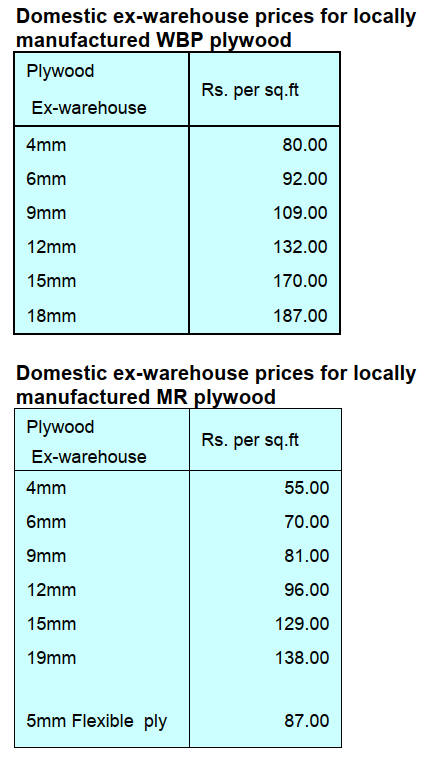
7.
VIETNAM
Wood and Wood Product (W&WP) trade highlights
According to Vietnam’s Customs Office in January 2024
W&WP exports were valued at US$1.4 billion, up 4.6%
compared to December 2023 and up 75% compared to
January 2023. In particular WP exports stood at US$924
million, down 3% compared to December 2023 but up
87% compared to January 2023.
Vietnam’s exports of wooden furniture in January 2024
amounted to US$884 million, up 4.7% compared to
December 2023 and up 99% compared to January 2023.
W&WP exports to the EU market in January 2024
contributed US$63 million, down 6% compared to
December 2023 but up 5% compared to January 2023.
W&WP exports to the US market in January 2024 were
recorded at US$781 million, up 4.6% compared to
December 2023 and up 15% compared to January 2023.
Vietnam’s W&WP imports in January 2024 reached
US$250 million, up 35% compared to December 2023 and
up 108% compared to January 2023.
In December 2023 Vietnam imported 45,900 cu.m of pine
worth US$10.5 million, down 37% in volume and 35% in
value compared to November 2023. However, compared
to December 2022, imports increased by 21% in volume
and 13% in value.
In 2023, pine imports amounted to 705,400 cu.m worth
US$155.0 million, down 24% in volume and 39% in value
compared to 2022.
Ash wood imported into Vietnam in December 2023
amounted to 32,300 cu.m worth US$8.5 million, down 4%
in volume but up slightly in value compared to November
2023. Compared to December 2022 imports were down
34% in volume and 36% in value. Overall, in 2023 ash
wood imports were 497,400 cu.m, worth US$127.9
million, up 0.3% in volume but down 3% in value
compared to 2022.
Imports of logs and sawnwood from the US in December
2023 were reported at 41,920 cu.m at a value of US$17.16
million, down 15% in volume and 20% in value compared
to November 2023 and down 5% in volume and 111% in
value compared to December 2022.
In 2023, imports of raw wood from the US to Vietnam
totalled at 522,010 cu.m at a value of US$223.62 million,
down 24% in volume and 32% in value compared to 2022.
Vietnam’s imports of raw wood from Africa in December
2023 amounted to 45,020 cu.m at a value of US$17.47
million, down 30% in both volume and value compared to
November 2023 and down 69% in volume and 67% in
value compared to December 2022.
In 2023 imports of raw wood from Africa amounted to
720,060 cu.m at a value of US$281.81 million, down 46%
in volume and 43% in value compared to 2022.
Optimism after good start to 2024
The industry in Vietnam faces a tough road to recovery
and industry attendees at the 2024 Vietnam International
Furniture an Home Accessories Fair (VIFA EXPO) were
vocal in discussing the hurdles which included diminished
order volumes, the relentless quest for innovation in
design and the logistical nightmares fueled by rising costs
and geopolitical tensions.
Yet, amidst these challenges the rise in wood product
exports in January was encouraging and hopefully signals
a reminder of the industry's capability to bounce back.
With over 600 exhibitors from 17 countries, VIFA EXPO
offered the opportunity for companies to network, see
innovative designs and a platform for businesses to
identify new markets.
The perception in the trade is that there are positive
several factors that signal a possible recovery. The easing
inflation in the US could drive demand for Vietnamese
wooden products.
Manufacturers are aware they musy diversify markets,
enhance productivity and constantly examine design
trends to be successful.
See:
https://bnnbreaking.com/world/asia/vietnams-wood-industry-sees-rays-of-hope-a-resilient-comeback-in-2024
W&WP export target at US$16 billion in 2024
Vietnam has targeted earning US$16 billion from the
export of wood and wood products this year given the
prospects in certain markets according the Ministry of
Agriculture and Rural Development (MARD).
Vietnam’s key markets include China, the US, Japan,
South Korea, the EU and China. In the first month of this
year wood and wood product exports to Europe saw
positive growth. Those to the Netherlands fetched US$9.2
million, up 5% against December and almost double that
in January 2023.
Wood exporters remain concerned about rising
transportation costs as tensions in the Red Sea forced
shipping lines to divert vessels to ensure safety.
Transportation costs to the EU and the US have, however,
begun to ease over the past few weeks. Chairman of the
Vietnam Timber Forestry Products (VIFOREST), Do
Xuan Lap, said transportation costs for a 40-foot container
from Vietnam to the EU have come down to US$3,786.
See:
https://vneconomy.vn/2024-wood-and-wooden-product-exports-targeted-at-16bln.htm
Expanding plantations
The Ministry of Agriculture and Rural Development
MARD has announced plans to cultivate approximately 1
million hectares of large-sized plantation trees by 2030 to
support economic growth, enhance environmental
protection and ensuring a sustainable timber supply for
both domestic and international markets.
The goal is to maintain the current 500,000 hectares of
commercial forests and expand this to 1 million hectares
with acacia and eucalyptus. The aim is to achieve an
average yield of 20 cubic metres per hectare annually by
2025 and 22 cubic metres by 2030.
See:
https://bnnbreaking.com/world/vietnam/vietnams-green-vision-aiming-for-1-million-hectares-of-timber-forests-by-2030
8. BRAZIL
Sustainable forest
management supported by reliable
financing
In Mato Grosso the 2023/2024 Harvest Plan (through
sustainable forest management) is forecast to capture
around 17% of the R$5.8 billion in available forest
resources. The forest-based sector in the State is huge and
there are 620 industries associated with the Centro das
Indústrias Produtoras e Exportadoras de Madeira do
Estado de Mato Grosso (CIPEM).
In the State there are more than 4.7 million hectares of
managed forests protected against deforestation. The
timber sector generates approximately 10,000 direct jobs
and is the 4th largest in formal jobs creation among
manufacturing industries in the State. In several
municipalities, timber companies are the main source of
employment, revenue and taxes and contributed R$66.2
million to the State in 2022.
The flow of finance is esstial for industries and the
"Renovagro" credit line is a primary lender for the sector
having released around R$1 billion in the first five months
of 2023. The Bank of Brazil (Banco do Brasil) has also
increased its financing for forest management.
See:
https://noticiaexata.com.br/geral/manejo-florestal-producao-sustentavel-em-destaque-no-plano-safra-2023-2024/#:~:text=No%20contexto%20do%20Plano%20Safra%202023%2F2024%20em%20Mato,os%20financiamentos%20para%20manejo%20florestal%2C%20atingindo%20R%24%205%2C1
No harvesting until April in Mato Grosso State
The timber sector in the State of Mato Grosso, one of the
main tropical timber producing states in the Amazon
region, is currently restricted from felling, hauling and
transporting logs under an ordinance in effect until 1
April.
The measure, which came into force 1 February, aims to
protect the soil during the rain season and covers around
6% of the State land, equivalent to 52,000 sq.km that
include areas with Sustainable Forest Management Plans.
During this period it is only possible to obtain permits to
transport timbers stockpiled in registered timber yards.
The restriction follows the guidelines of the National
Environment Council (CONAMA) resolution and is
regulated by the Mato Grosso Forestry Technical Chamber
through Resolution No. 10/2017 which establishes the
prohibitive period for logging under the low-impact
Sustainable Forest Management regime.
See:
https://forestnews.com.br/periodo-proibitivo-manejo-florestal-mt-abril/
Export update – January 2024
In January 2024 Brazilian exports of wood-based products
(except pulp and paper) increased 13% in value compared
to January 2023, from US$266.6 million to US$300.3
million.
Pine sawnwood exports increased 8.5% in value between
January 2023 (US$44.6 million) and January 2024
(US$48.4 million). In volume, exports increased 16% over
the same period, from 192,400 cu.m to 222,400 cu.m.
Tropical sawnwood exports decreased 16% in volume,
from 29,500 cu.m in January 2023 to 24,700 cu.m in
January 2024. In value, exports decreased 28% from
US$15.7 million to US$11.3 million, over the same
period.
In contrast pine plywood exports increased almost 4% in
value in January 2024 (US$58.2 million) compared to
January 2023 (US$56.2 million) but in terms of volume
exports decreased from 189,500 cu.m (January 2023) to
188,600 cu.m. (January 2024)
Tropical plywood exports decreased in volume 51% and in
value 39%, from 3,500 cu.m and US$1.8 million in
January 2023 to 1,700 cu.m and US$1.1 million in January
2024, respectively.
As for wooden furniture, the export value increased from
US$34.6 million in January 2023 to US$38.6 million in
January 2024, an increase around 12%.
Reducing bureaucratic obstacles to speed shipments
The Federation of Industries of Mato Grosso (FIEMT)
together with the Center of Timber Producing and
Exporting Industries of Mato Grosso State (CIPEM) and
the National Forest-Based Forum (FNBF) met with
representatives from the Senate and Brazilian Institute of
Environmentand Renewable Natural Resources (IBAMA)
with the aim of reducing bureaucratic obstacles for exports
from the forest-based sector in the State of Mato Grosso.
In particular the aim was to resolve issues such as shipping
delays at ports due to the lack of IBAMA inspection
agents. One of the requests to IBAMA was to make
officials available for work at the Cuiabá Dry Por, to
resolve these demands and speed up exports. Mato
Grosso's forestry sector plays a crucial role in the
economy, with trade transactions with 62 countries in
2023, totalling US$104.6 million in exports, especially to
the United States, India and China.
See:
https://cipem.org.br/noticias/fiemt-e-setor-de-base-florestal-de-mato-grosso-se-unem-para-destravar-exportacoes-do-segmento
Furniture exports - promoting differentiation and
design over price
In 2023 the Brazilian furniture industry faced tough
challenges as reflected in export earnings which fell by
11% compared to 2022 (US$735.3 million compared to
the US$ 830.7 million in 2022). Global economic
instability has had an impact on exports, particularly a
decline in demand from the United States which
accounteds for 32% of total furniture exports in 2023.
Despite this, the sector's trade balance remained positive
with a surplus of more than US$500.9 million. Market
diversification strategies and participation in international
events, such as the ICFF (International Contemporary
Furniture Fair) in New York, are planned to boost exports
in 2024.
Although the national furniture sector faced challenges in
2023 it plans innovative strategies for 2024 that
differentiate Brazilian products with the aim of increasing
international competitiveness. Brazil, renowned for
producing quality furniture, is aiming for long-term
growth in exports and promotes the high level of
differentiation and design rather than just competing on
price.
The New Year has brought some optimism but export
projections depend on the economies in target markets and
specifically inflation control in the furniture production
chain and the global geopolitical situation which have a
direct impact on international commodity prices.
See:
http://abimovel.com/balanco-2023-exportacoes-brasileiras-recuam-no-setor-de-moveis-diante-de-obstaculos-no-mercado-internacional/
Through the eyes of industry
The latest GTI report lists the challenges identified by the private
sector in Brazil.
See:
https://www.itto-ggsc.org/static/upload/file/20240223/1708653799120615.pdf
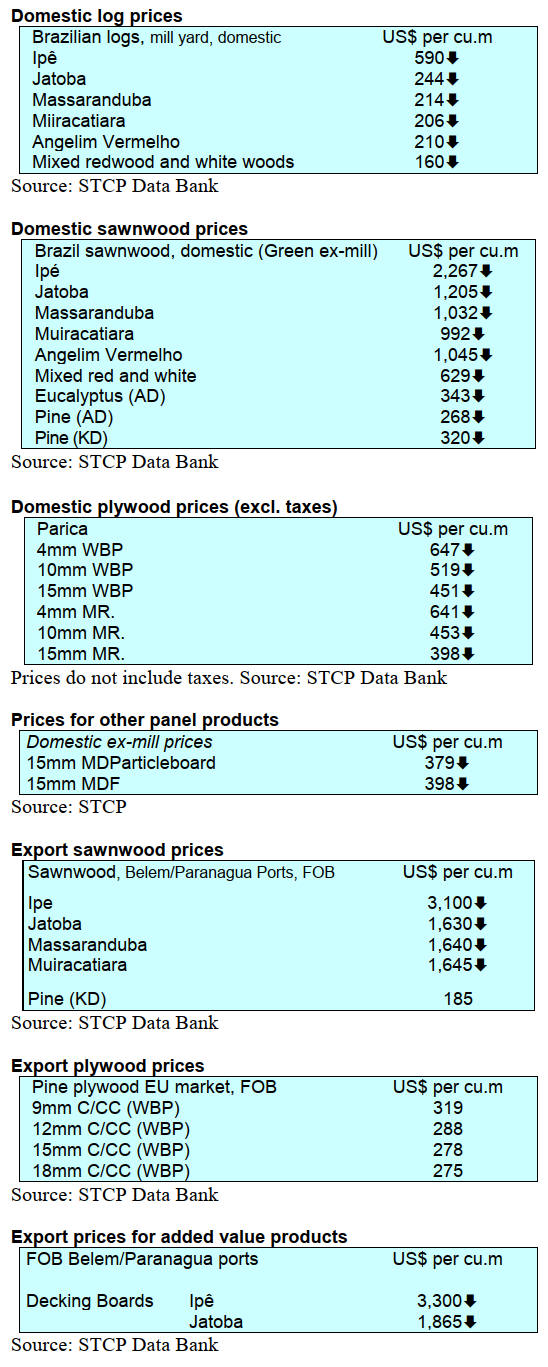
9. PERU
Shipments of wood
products dropped in 2023
Peruvian wood exports in 2023 reached US$100.9 million,
a drop of 20% compared to the previous year (US$126.5
million) and represented just 0.1% of total national export
shipments to the world according to the Association of
Exporters (ADEX).
The manager of the ADEX Services and Extractive
Industries unit, Lucía Rodríguez Zunino, highlighted the
need to implement measures that encourage investment to
take advantage of the full potential of resources in the
Amazon region of the country.She added “regulations are
required to promote the development of the timber sector
as it is one that generates the most jobs per million dollars
exported.
Last year there were around 20,000 jobs supported by the
sector in areas far from cities and the industries there
added value to Peruvian forests which, she added, is the
best way to ensure their survival.
According to data from the ADEX Data Trade Intelligence
System, despite suffering a 16% drop sawn wood
(US$42.3 million) was the main product exported,
accounting for 42% of the total. In second place were
semi-manufactured products (US$34.8 million) but export
earnings were down 38% in 2023. The main item in this
category was profiled wood except Ipé (US$15.3 million).
Others categories were construction products (US$5.5
million), firewood and charcoal (US$5.4 million),
manufactured products (US$4.3 million), furniture and its
parts (US$4.1 million), veneer and plywood (US$2.4
million), among others.
The most notable destinations were China (US$19.9
million), France (US$13.9 million), Mexico (US$13.7
million), Dominican Republic (US$11.8 million) and the
USA (US$ 9.5 million). Completing the top ten export
destinations were Vietnam, Ecuador, Belgium, Denmark
and Chile.
OSINFOR/USAID work on sustainable forest
management
Within the framework of strategic collaboration through
international cooperation the Forestry and Wildlife
Resources Supervision Agency (OSINFOR) received
technological support from the USAID ‘Prevent Project’
that will contribute to the capacity for further development
of the forest management model promoted by both
institutions to strengthen governance and legality in the
sector.
For this purpose, ‘Prevent’ delivered drones that will be
used in the monitoring and supervision of harvesting
permits in order to collect evidence of change of use,
degraded areas, as well as over exploitation.
Between June 2022 and September 2023, OSINFOR has
monitored more than three million hectares of forest using
the Optimized Supervision methodology and detecting
four million board feet of unauthorised extraction.
See:
https://www.gob.pe/institucion/osinfor/noticias/904247-osinfor-y-prevenir-de-usaid-unen-esfuerzos-para-contribuir-a-una-gestion-forestal-sostenible
SERFOR campaign to prevent forest fires
The National Forestry and Wildlife Service (SERFOR)
began an information campaign on ‘Risk management for
the prevention of forest fires’ in the Department of Cusco.
Specialists from SERFOR's Cusco Technical Forestry and
Wildlife Administration (ATFFS) provided knowledge on
conceptual aspects and legal framework related to forest
fires.
The Technical Administrator of SERFOR's ATFFS in
Cusco reported that 40 members of the immediate reaction
force from the 5th Mountain Brigade participated in the
workshop because they have a specific and temporary
function in fire management.
“There is an alliance established with this military
institution, whose members intervene in the control and
combat actions of forest fires when requested” said the
Technical Administrator. In 2022, Cusco registered 1,269
forest fires that affected around 126,230 hectares.
See:
https://www.gob.pe/institucion/serfor/noticias/906962-cusco-serfor-inicia-campana-para-la-prevencion-de-incendios-forestales
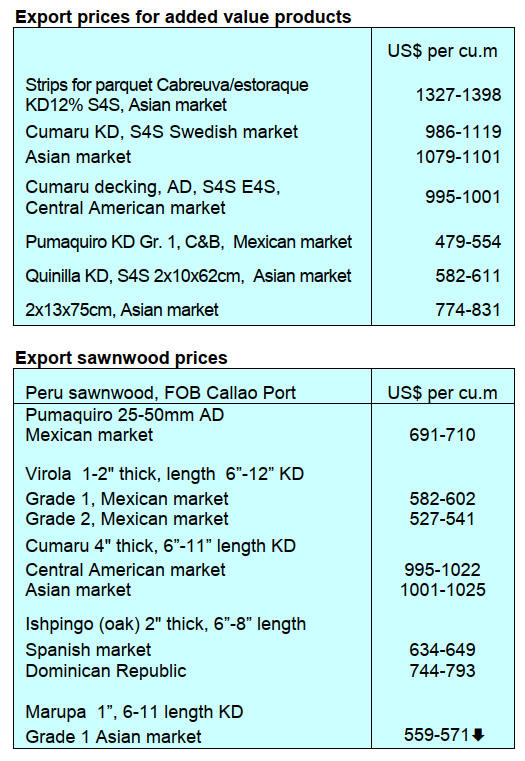
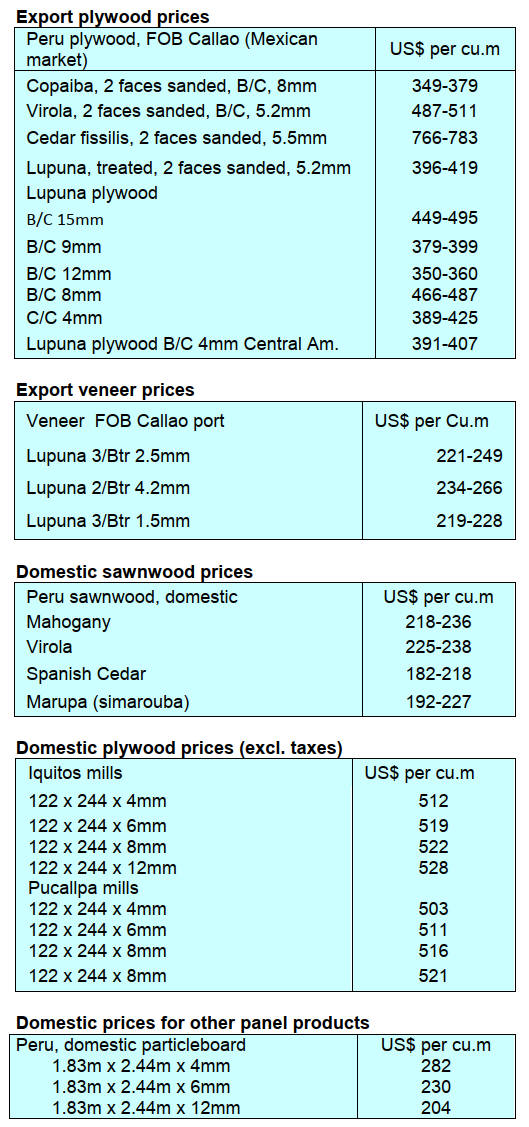
|